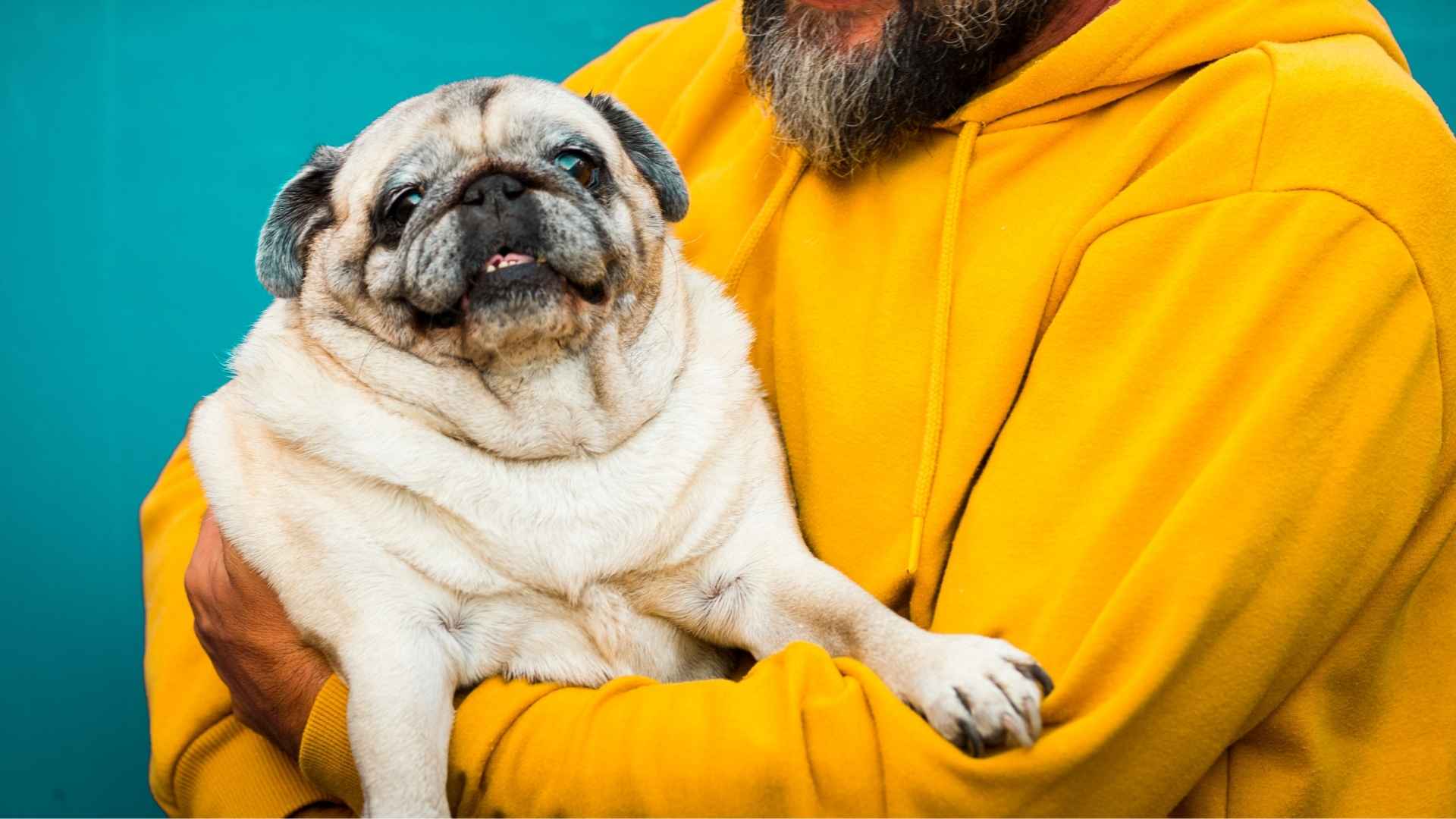Here’s something you’re going to love: big, chunky, cuddle-worthy dogs! You know, the ones with extra fluff, sturdy builds, and faces that practically beg for belly rubs. If you’ve ever seen a dog so round and huggable that you had to resist the urge to squish them, you’re in the right place.
Some dogs are naturally built like teddy bears, with strong frames and a little extra something that makes them irresistible.
Maybe you’re thinking of getting one, or maybe you just love looking at them (totally valid). Either way, we’re talking about the chonkiest, most lovable dog breeds that walk this earth.
Get ready for some serious cuteness, a few surprises, and maybe even a little breed inspiration if you’re on the lookout for a new furry friend!
Chunky Dog Breeds
1. Pug
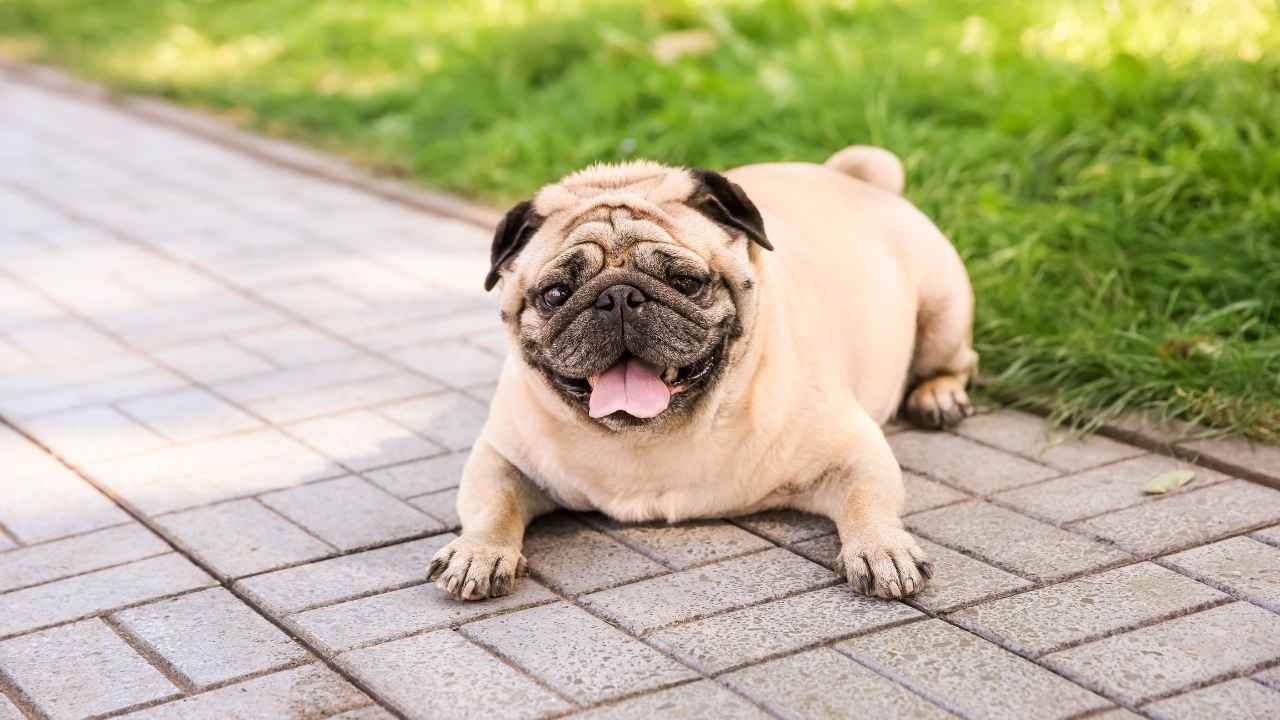
Pugs have been charming humans for over 2,000 years, originally bred as royal companions in ancient China. Their wrinkled faces and big, soulful eyes were so adored that emperors wouldn’t let commoners own them. Even today, their expressions seem to hold centuries of secrets.
Weighing between 14–18 pounds, Pugs are compact but sturdy, with a solid little frame. Their smooth coats come in fawn or black, and their curly tails add to their signature look. Despite their small size, they carry themselves with an amusing level of confidence, almost like tiny royalty.
One of the most affectionate breeds, Pugs crave human attention and thrive in social settings. They follow their owners like shadows, always wanting to be part of the action. Leave them alone too long, and they might give you the biggest guilt-trip stare ever.
Pugs have an unfortunate tendency to gain weight quickly, thanks to their love of food. Since they’re not the most athletic dogs, portion control and daily walks are a must. If left unchecked, their chunky bodies can put extra strain on their little legs and joints.
Because of their short muzzles, Pugs struggle with breathing issues, especially in heat or humidity. They don’t do well in extreme temperatures and should always have a cool, shaded spot to rest. If you hear snorting and snuffling, that’s just part of their charm—but also a sign to keep them comfy.
Despite their couch-potato reputation, Pugs can be playful and even a little stubborn. They love clowning around, often tilting their heads in that adorable, questioning way. Training them requires patience, but they respond best to positive reinforcement (and tasty rewards).
They may be small, but Pugs have the personality of a much bigger dog—bold, loving, and endlessly entertaining. Whether they’re zooming around the house or snuggled in your lap, they have a way of making every moment feel a little warmer.
2. Bulldog

Bulldogs, with their distinctive wrinkled faces and sturdy builds, are instantly recognizable and have a rich history. Originally bred in England for bull-baiting, a now-outlawed sport, they have transitioned into gentle and affectionate companions.
Weighing between 40 to 50 pounds, Bulldogs possess a muscular frame and a characteristic gait. Their short, smooth coats come in various colors, including brindle, white, red, and fawn.
Despite their tough exterior, Bulldogs are known for their gentle and friendly nature. Pawlicy mentioned that they form strong bonds with their families and are particularly good with children, making them excellent family pets.
However, their unique anatomy can lead to health challenges. Bulldogs are prone to brachycephalic obstructive airway syndrome (BOAS), which can cause breathing difficulties. It’s essential to monitor their activity levels and avoid excessive exercise, especially in hot weather.
Their facial wrinkles, while endearing, require regular cleaning to prevent skin infections. Moisture and debris can accumulate in these folds, leading to conditions like skin fold dermatitis if not properly cared for.
Bulldogs also have a higher risk of hip dysplasia, a condition where the hip joint doesn’t fit together correctly, leading to discomfort and mobility issues. Regular veterinary check-ups are crucial to monitor and manage this condition effectively.
Despite these concerns, with proper care and attention, Bulldogs can lead happy and fulfilling lives. Their loyal and loving nature makes them cherished members of many households.
3. Beagle

Beagles, with their merry disposition and soulful eyes, have been beloved companions for centuries. Originally bred in England for hunting small game like rabbits, their keen sense of smell and determination made them exceptional hunting dogs.
Sporting a short, smooth coat, Beagles come in various colors, including tricolor patterns of black, white, and brown. While they don’t have a thick double coat, their fur does shed moderately, so regular grooming helps keep your home fur-free.
These energetic hounds thrive on daily exercise to keep them physically and mentally stimulated. According to PetMD, without adequate activity, they might resort to mischievous behaviors to entertain themselves.
Beagles are known for their friendly and curious nature, making them great family pets. They generally get along well with children and other dogs, and with proper socialization, they can coexist peacefully with cats.
However, their strong hunting instincts mean they might not be the best fit for homes with smaller pets like rabbits or hamsters. Their nose can lead them astray, so a secure yard and leash walks are essential to prevent any escape attempts.
Regular vet visits are crucial for Beagles, as their floppy ears can be prone to infections. Keeping their ears clean and dry helps prevent potential issues down the road.
While Beagles don’t herd livestock, their history as pack animals means they enjoy companionship and can experience separation anxiety if left alone for long periods. Ensuring they have company or engaging toys can keep them content and out of trouble.
4. English Mastiff
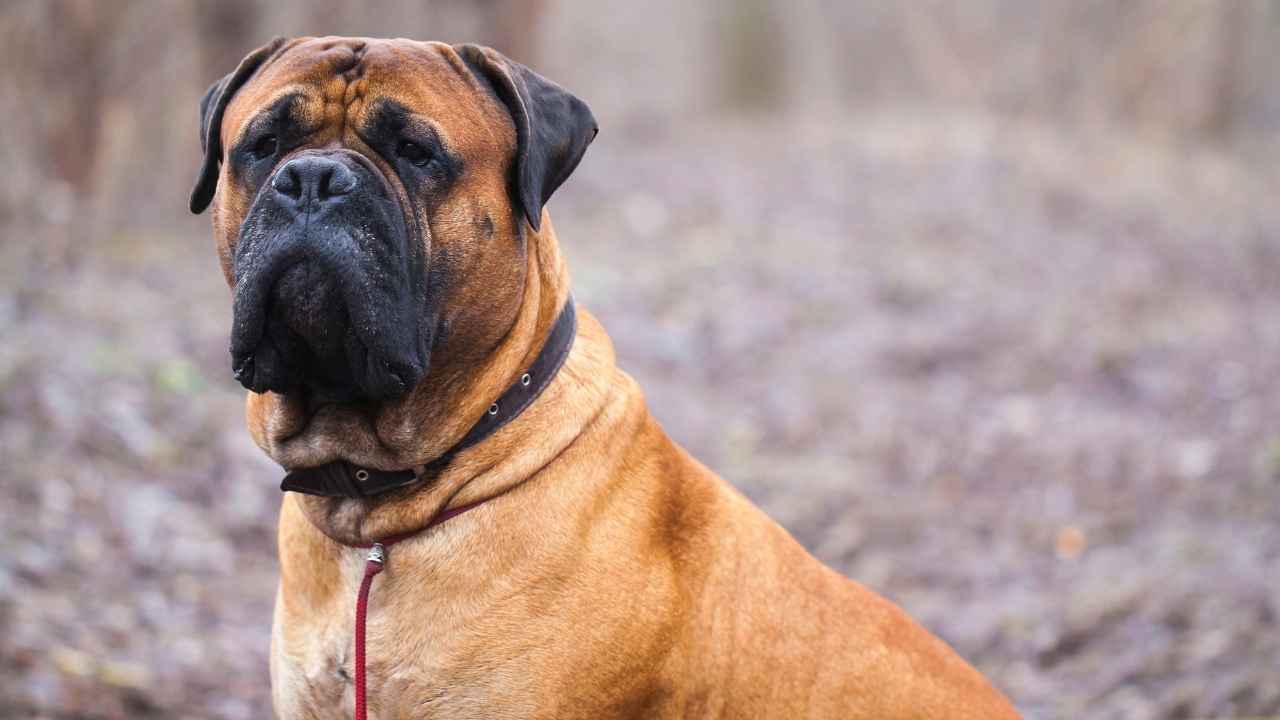
English Mastiffs, often referred to as gentle giants, are among the largest dog breeds, with males weighing between 160 and 230 pounds and females between 120 and 170 pounds. Their massive size and muscular build give them a commanding presence.
Despite their imposing stature, Mastiffs are known for their calm and affectionate nature. They form strong bonds with their families and are especially gentle with children, making them excellent family companions.
Given their size, regular veterinary check-ups are essential to monitor their health. Mastiffs can be prone to certain health issues, such as hip dysplasia and gastric dilatation-volvulus (bloat).
While they don’t possess a thick double coat, their short, dense fur provides adequate protection in various climates. However, they may require additional care in extremely cold climates to keep them comfortable.
Hill’s Pet stated that Mastiffs are not typically used as hunting dogs or for herding livestock. Their primary role has been that of a guardian and loyal companion, showcasing their protective instincts when necessary.
Their interactions with other pets, such as cats, can be positive, especially when introduced at a young age. Proper socialization ensures they coexist harmoniously with other animals in the household.
Due to their massive build, Mastiffs tend to have a slower pace and may prefer lounging over vigorous activities. Nonetheless, regular, moderate exercise is vital to maintain their health and prevent obesity.
5. Basset Hound
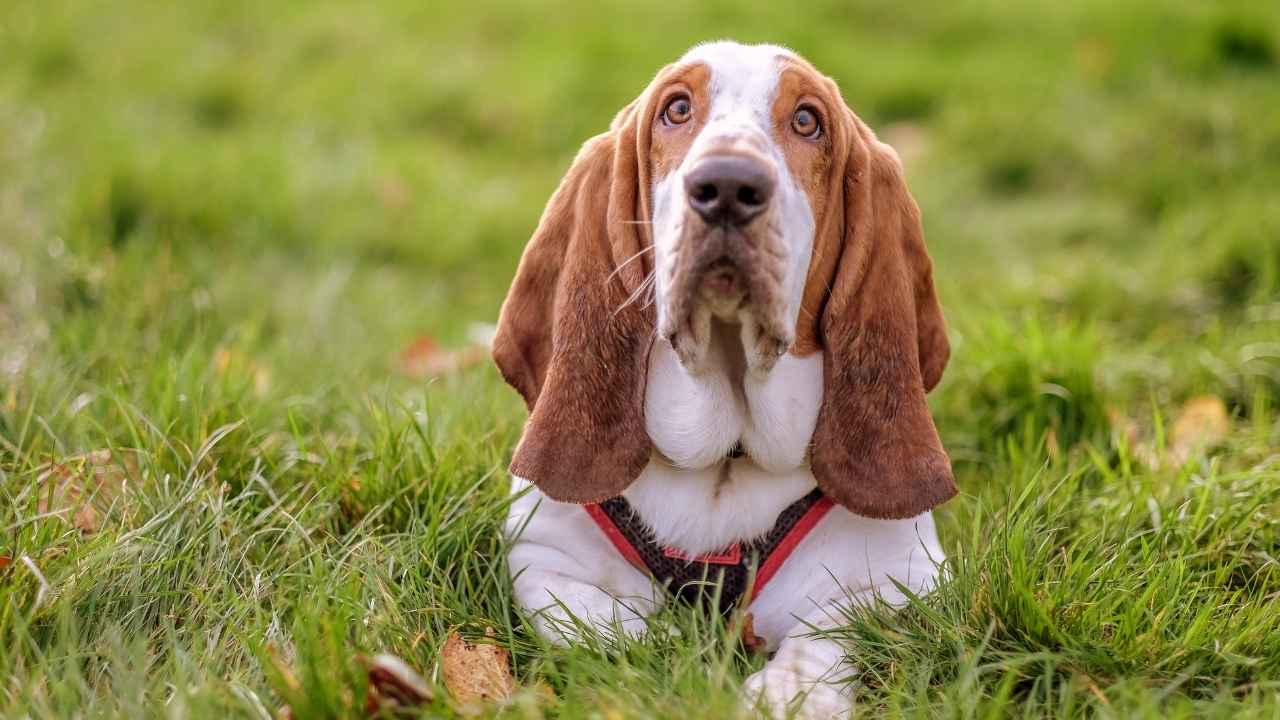
Basset Hounds, with their soulful eyes and droopy expressions, are hard to resist. Their unique appearance and gentle demeanor make them stand out in any crowd.
These dogs have a distinctive build, featuring a long body and short legs. This structure, while endearing, can make them prone to back issues. It’s essential to provide them with proper support and avoid activities that may strain their spine.
Regular visits to the vet are crucial for Basset Hounds. Their unique anatomy can lead to specific health concerns that require ongoing attention.
While Basset Hounds are adaptable, they may not be ideally suited for extremely cold climates. Their shorter stature means they are closer to the cold ground, which can be uncomfortable. Providing appropriate shelter and warmth is essential during colder months.
Despite their relaxed demeanor, Basset Hounds can be quite vocal. They have a deep, resonant bark that they aren’t afraid to use, especially when they catch an intriguing scent.
These dogs are known for their friendly and easygoing nature. They tend to get along well with other pets and are generally sociable.
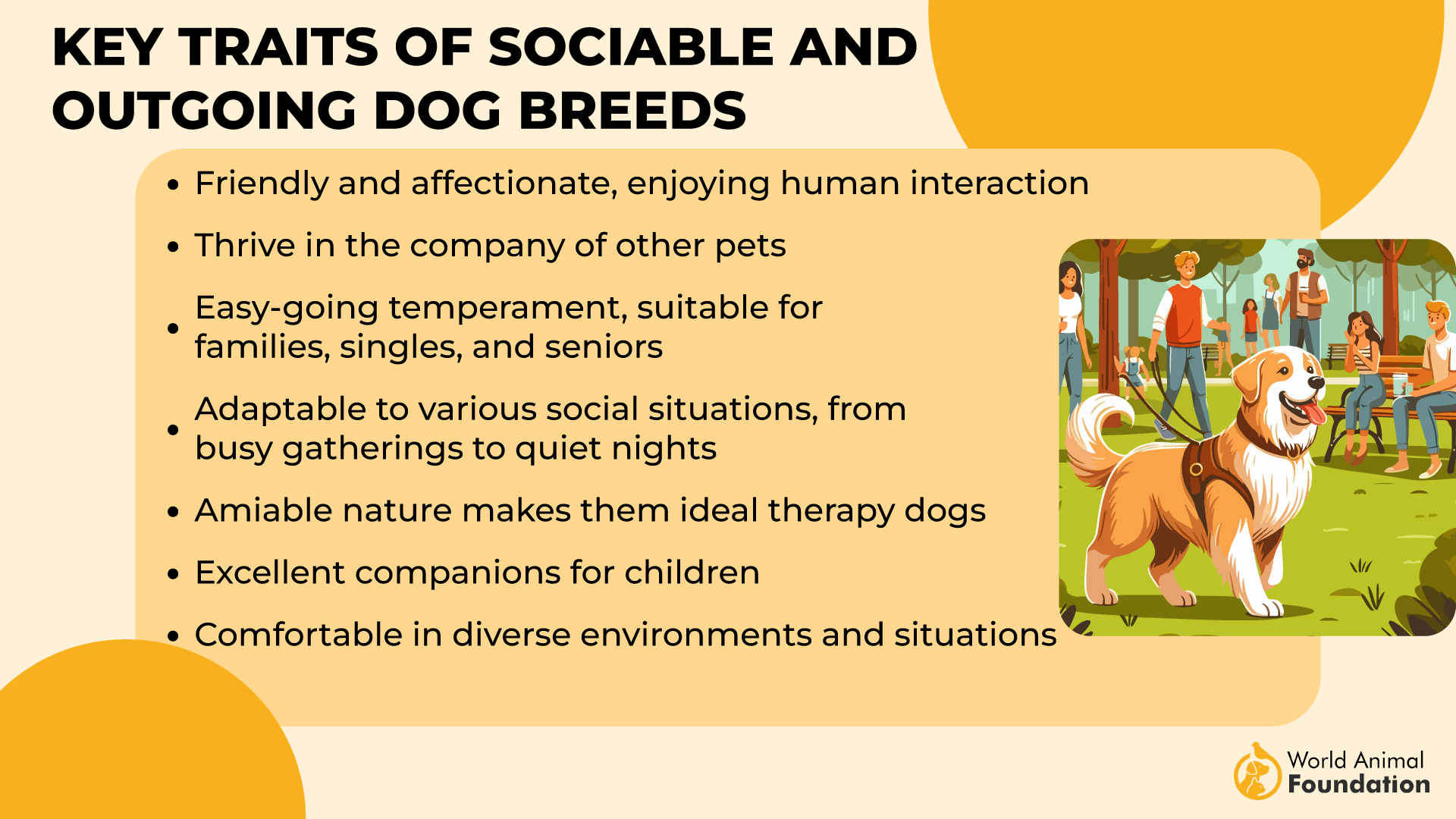
Basset Hounds are prone to obesity, which can exacerbate joint problems and other health issues. Monitoring their diet and ensuring they maintain a healthy weight is vital for their overall well-being.
6. Golden Retriever
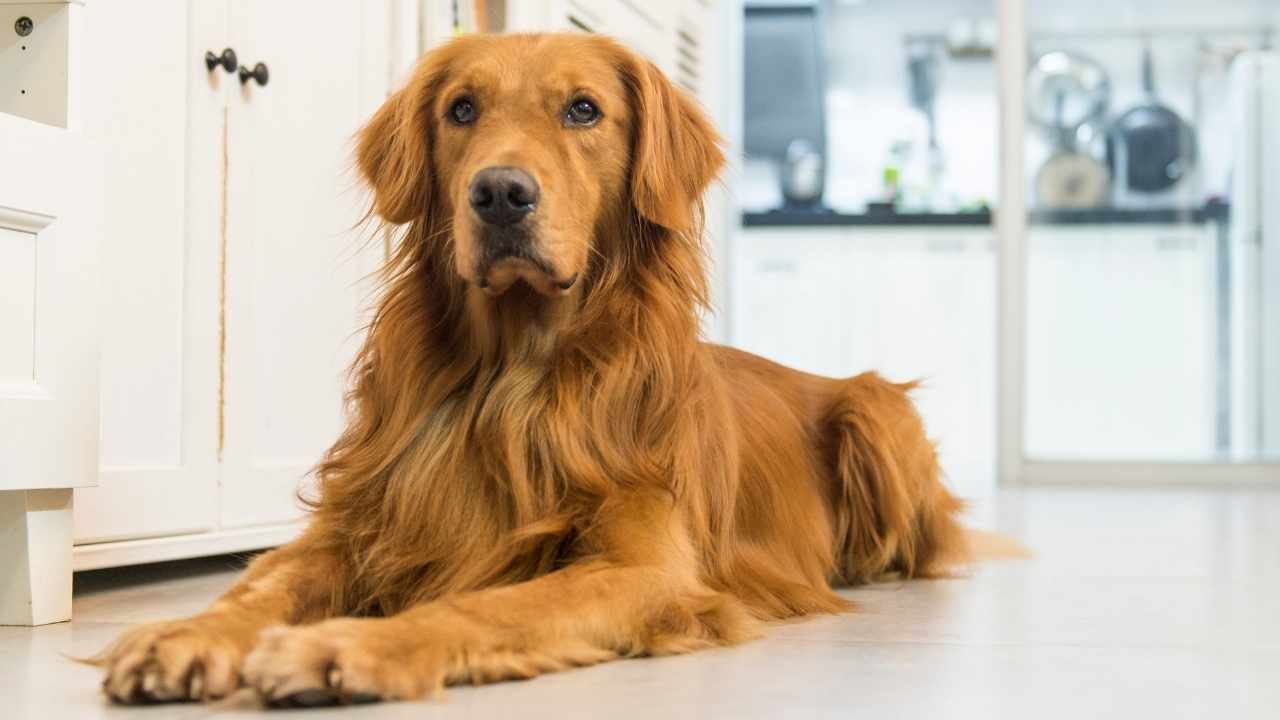
Golden Retrievers, with their friendly expressions and flowing golden fur, are a sight to behold. Their medium-sized, muscular build showcases both strength and grace. Males typically weigh between 65–75 pounds, while females range from 55–65 pounds.
Known for their intelligence and eagerness to please, Golden Retrievers excel in various roles, from search-and-rescue missions to assisting individuals with disabilities. Their versatility and trainability make them invaluable in many service-oriented tasks.
These dogs possess a dense, water-repellent undercoat beneath their lustrous outer fur, which requires regular grooming to maintain its health and shine. Despite their beauty, be prepared for some shedding, especially during seasonal changes.
Golden Retrievers thrive on social interactions and can experience anxiety if left alone frequently. They flourish in active households where they can participate in various activities and feel like a true part of the family.
Their even-tempered nature makes them wonderful companions for individuals of all ages. Whether it’s a game of fetch or a quiet evening at home, they are content as long as they’re with their loved ones.
Regular physical activity is essential to keep Golden Retrievers physically fit and mentally stimulated. Engaging them in activities like swimming, hiking, or agility exercises can help channel their energy positively.
With proper care, training, and affection, Golden Retrievers can bring joy and companionship to any home, enriching the lives of those who welcome them into their families.
7. Great Pyrenees
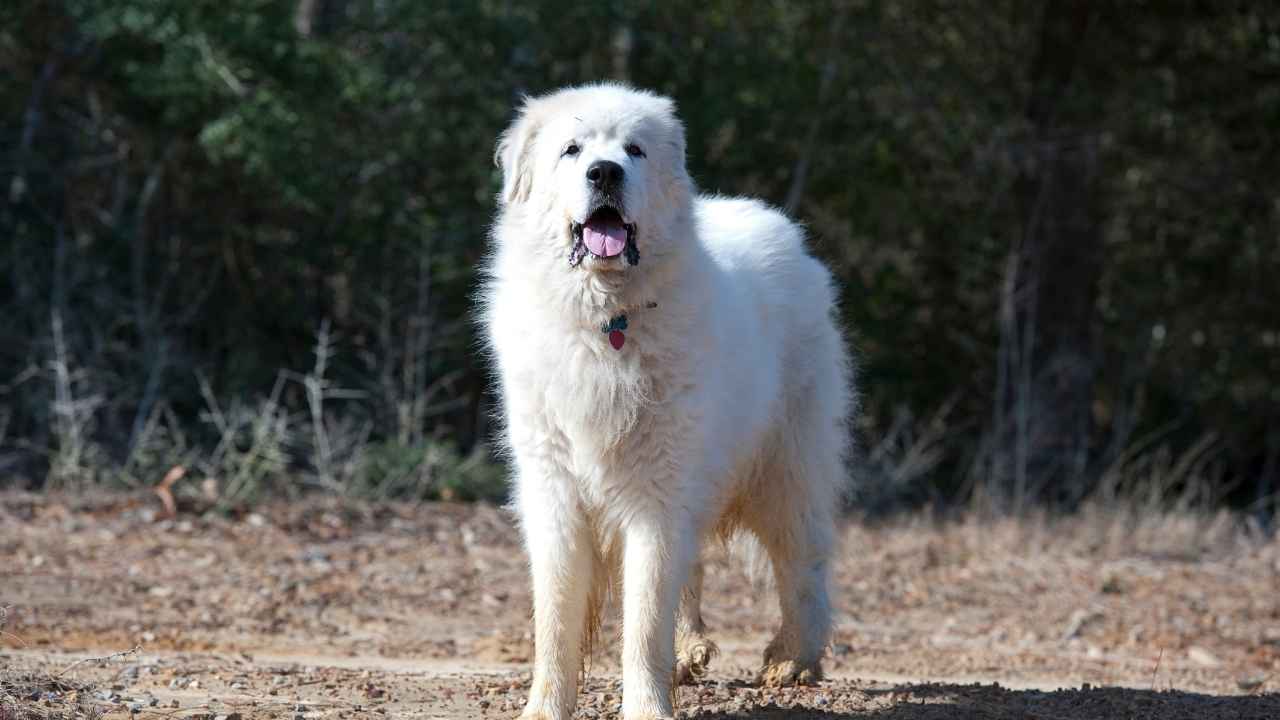
Great Pyrenees are majestic canines known for their calm and patient demeanor. Their imposing size and thick, weather-resistant fur make them both beautiful and functional, especially in cooler environments.
These dogs are quite large, with males typically weighing between 100 and 150 pounds and females ranging from 85 to 110 pounds. Their substantial size requires more space to move comfortably, making them better suited for homes with ample room.
While they are generally calm, Great Pyrenees have a strong desire to protect their loved ones. This protective instinct makes them excellent guardians, but it also means they can be wary of unfamiliar faces.
Due to their size, they can be prone to joint issues such as hip dysplasia. Maintaining a healthy weight is crucial to minimize stress on their joints and prevent extra weight from exacerbating potential problems.
Regular grooming is essential to keep their thick fur in top condition. This not only helps reduce shedding but also prevents matting and keeps their skin healthy.
Their independent nature means they may not always seek constant attention, but they do appreciate companionship. Early socialization and training are key to ensuring they become well-adjusted members of the household.
Great Pyrenees have thick, weather-resistant fur that helps protect them in different environments. However, this also means they shed significantly, especially during seasonal changes, requiring consistent brushing to manage loose hair
Conclusion
Big, stocky, and full of personality—these dogs prove that a little extra size comes with a whole lot of love. Whether built for protection, companionship, or adventure, each of these breeds has something special to offer.
Chunky dogs aren’t just about their sturdy frames; they bring warmth, loyalty, and an undeniable charm to any home. Their presence is hard to ignore, and once they find a place in your heart, there’s no going back.
Owning a large, well-built dog comes with responsibilities, from proper nutrition to regular check-ups. Keeping them active, engaged, and healthy ensures they live their best lives while staying by your side for years.
Choosing the right dog means understanding their needs, energy levels, and personalities. The best match isn’t just about appearance—it’s about finding a furry friend that fits your lifestyle.
Ready to bring home a lovable, chunky companion? Explore different breeds, learn about their care, and find the perfect big dog to fill your home with joy!


